Fermented Celery
I’ve wanted to share this one for a long time! Fermented celery is so delicious and easy to ferment. It’s quite similar to sauerkraut. So if you like fermented cabbage, you’re going to love fermented celery.
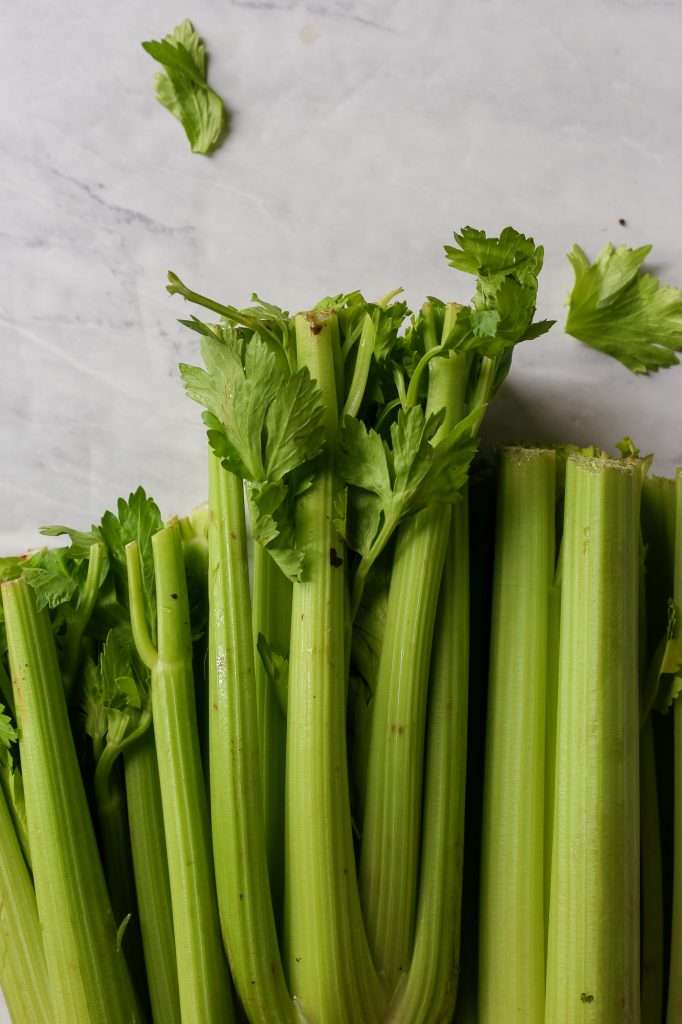
Make sure you start with fresh, crisp celery, and I recommend organic if you have access to it. Conventional celery may not ferment well. Also, “triple washed’ “ready to eat” celery will lack the microorganisms necessary for fermentation.
Here are all the ingredients you need to get started:
- celery
- sea salt
- water
- shallot
- black pepper
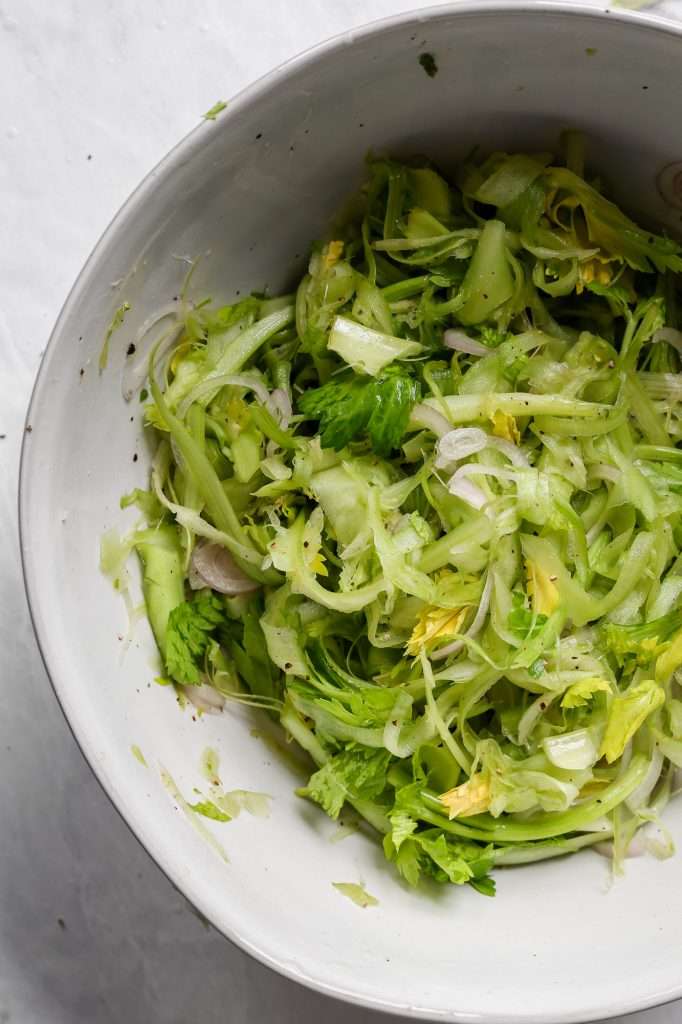
How to Ferment Celery
Because of the way celery is shaped, it can be really dirty between the pieces. So before mixing your ingredients, you need to wash the celery well. I like to shred the celery first and then wash it off.
I usually shred the celery with a vegetable peeler, then add it to a colander and rinse it a few times. No matter how you cut it, getting all the dirt off is easier after cutting. You can also rinse it before cutting and rinse it again after cutting.
After the celery is rinsed, we prepare it similar to sauerkraut. You will add 2.5% salt by weight, then allow it to ferment for 21-28 days (more on this below).
Celery is about 96% water, so you will get a lot of brine once you add salt. I still added a bit of water to this recipe because I love to have extra brine for my wild heirloom culturing recipes.
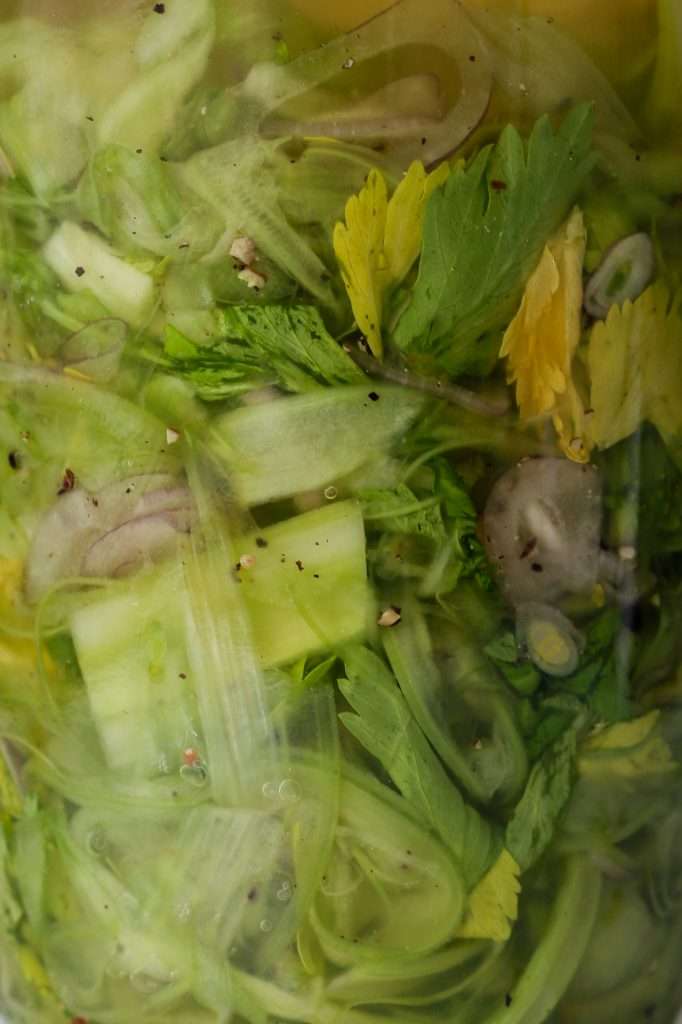
Fermenting Celery with Black Pepper and Shallot
I recommend fermenting your celery for at least 14 days before eating, with 21-28 days being the best fermentation time for optimal flavor and health benefits. This timeline is very similar to sauerkraut. I like how the shallot and black pepper flavors develop after 21 days of fermentation at room temperature.
Naturally, fermenting vegetables takes time. By checking the progress of microbial stages under the microscope, we have provided you with a handy timeline below! If you follow our recipe and directions, your timeline of celery fermentation should approximately match ours!
Note that temperature will influence how fast or slow celery ferments. This timeline is applicable between 70-80° F. If you keep your home colder, the process is slower. If your home is warmer, it will be faster.
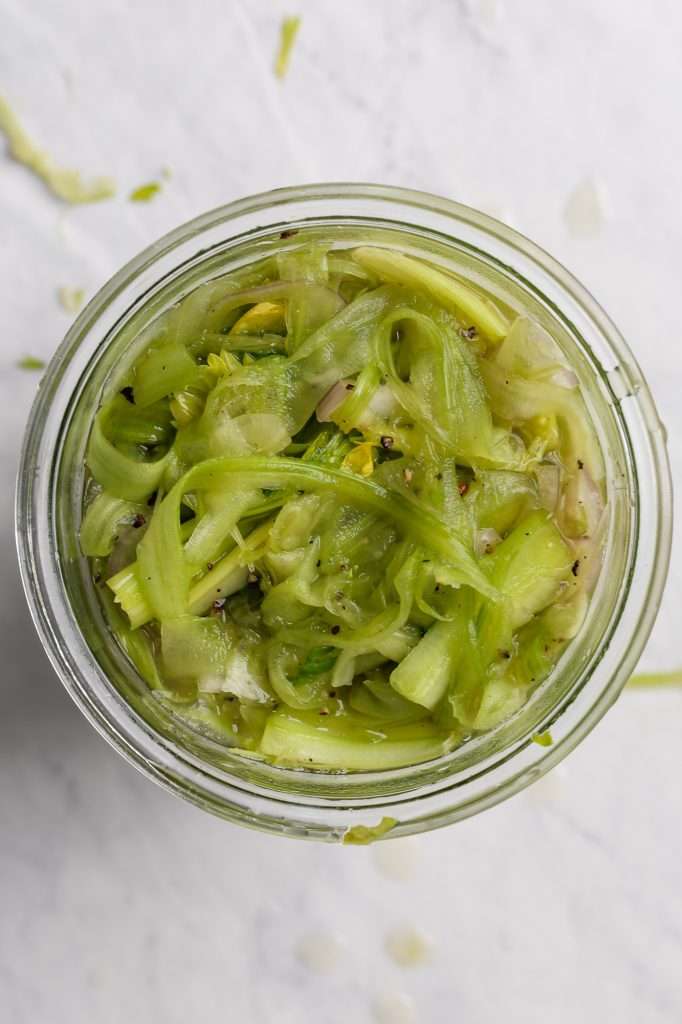
Timeline for Fermented Celery
24 – 48 hours: All contents in the jar should be submerged beneath the brine. At this time, there are still Gram-negative bacteria and possible pathogens present.
48 hours – 5 days: After 48 hours, you should start to see lots of bubbles being produced. This is when the ferment enters stage two of vegetable fermentation. Leuconostoc bacteria begin to thrive, and Gram-negative organisms die off.
5 – 10 days: The bubbles in the brine will decrease as the ferment leaves stage two and enters stage three. The ferment will become cloudy, the color will change, and a pleasant sour smell will develop. You should also recognize shallot and pepper smells. Lactobacillus species begin to thrive at this time.
10 – 21 days: Next, Lactobacillus make up most or all of the microbial population. They produce copious amounts of lactic acid, making the fermented celery smell even more pleasantly sour. This is when the celery becomes naturally preserved.
21 – 28 days: This is when you want to smell and taste test. Wait for the celery to smell and taste as you like, and refrigerate when you find the smell and taste most pleasant! We like ours best when we refrigerate at about 25 days.
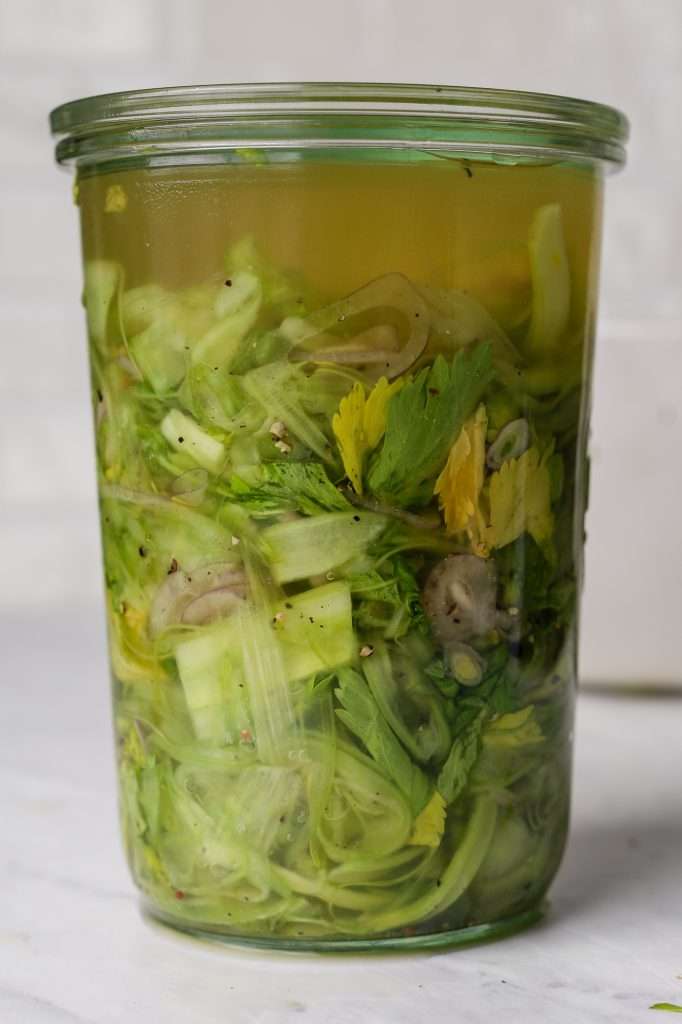
Fermented Celery Benefits
The benefits of fermented celery are similar to regular celery or celery juice. However, when celery is fermented, all the benefits are more bioavailable. There is also the obvious added benefit of live probiotic bacteria in fermented celery.
Celery contains vitamin C, vitamin K, potassium, beta carotene, and phytonutrients, which are all more bioavailable after the microbial action during fermentation. These compounds can reduce inflammation in the digestive tract, cells, blood vessels, and organs.
Celery is also a wonderful source of fiber that can help keep your gut microbiome balanced. That’s one of the things I love most about fermented vegetables. They are naturally prebiotic and probiotic and the best choice for gut health.
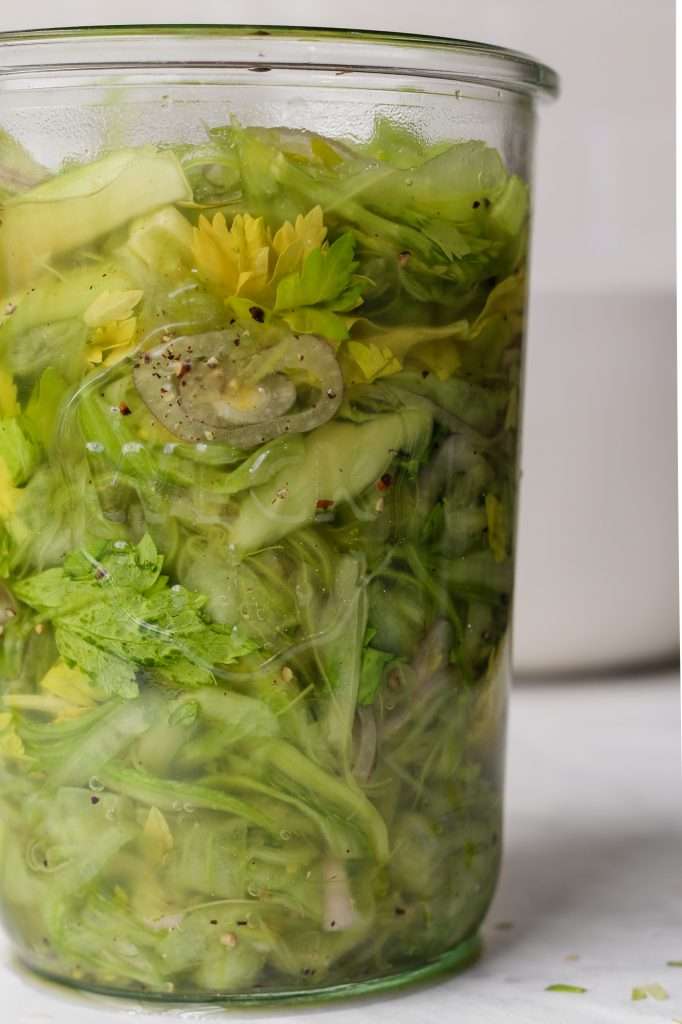
Supplies You Need for Fermenting Celery
For the best sauerkraut flavor and texture, you should use weight measurements for your fermentation ingredients. That means you need a kitchen scale. Weighing your ingredients gives you consistent and superior fermentation results. This is the scale we use in our home kitchen.
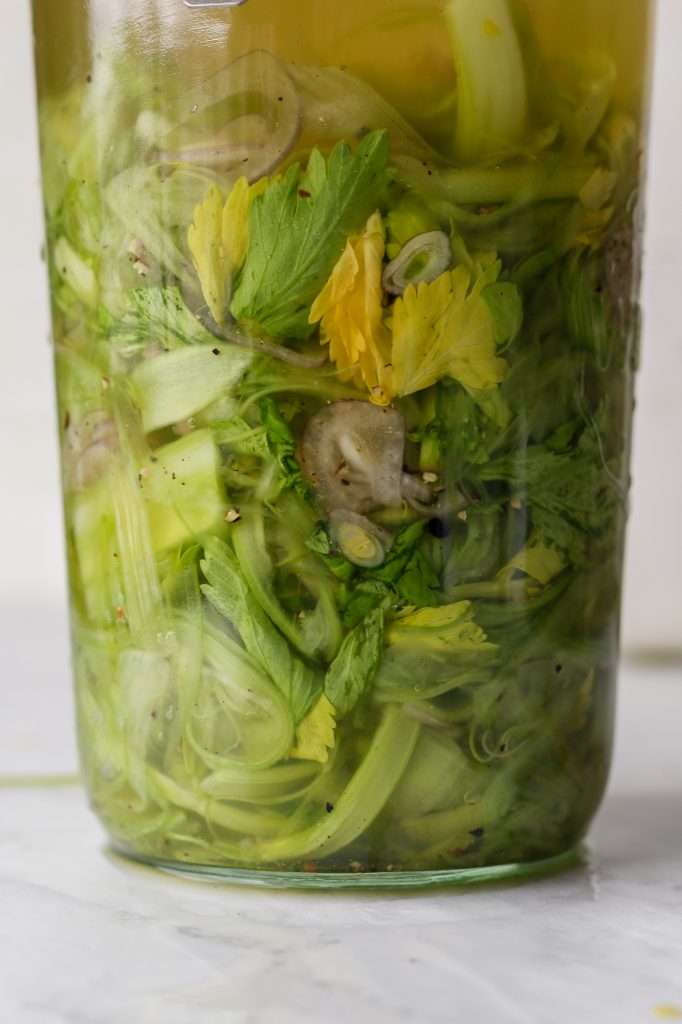
More Fermentation Recipes to Try
- Roasted Jalapeno Sauerkraut with Dill and Garlic
- Naturally Fermented Swiss Chard Stems
- Fermented Leeks: How to Ferment Leek Tops
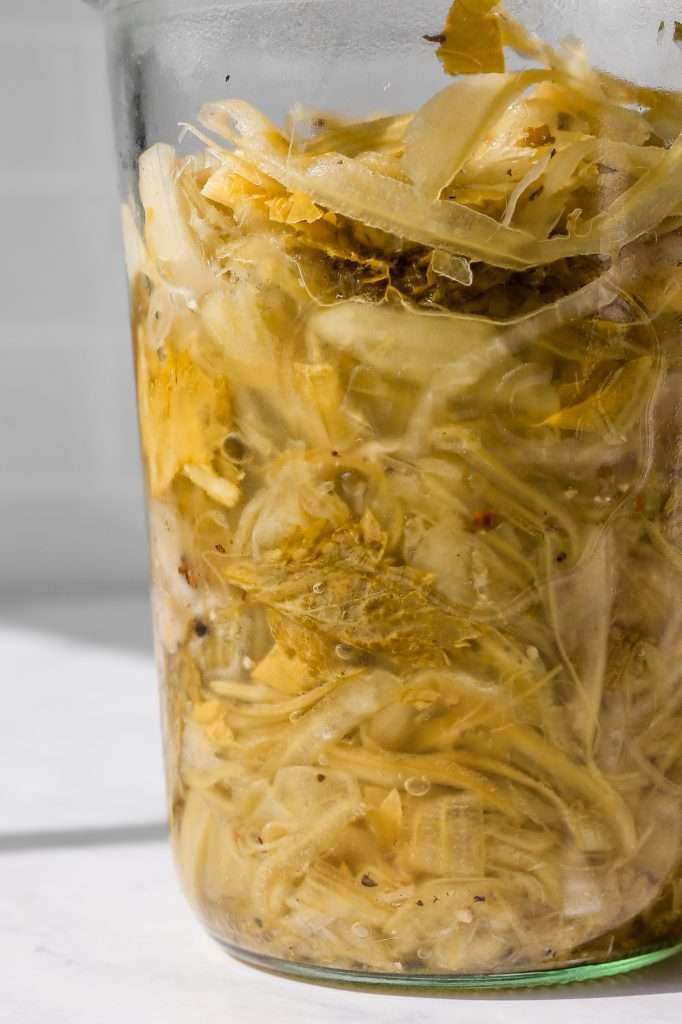
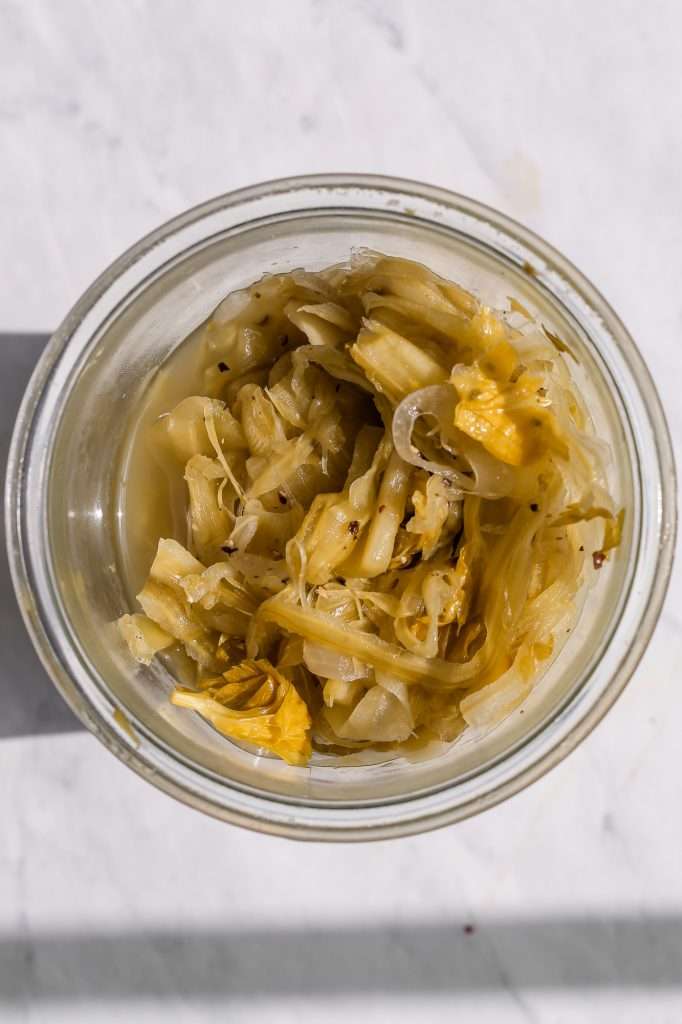

Fermented Celery with Shallots and Black Pepper
Light, sour, briny, and full of flavor. You’re going to love this fermented celery with shallots and black pepper. Use it anywhere you would use sauerkraut or pickles. Fermenting celery only takes a few ingredients and a couple of weeks.
- Prep: 10 minutes
- Total Time: 504 hours 10 minutes
Ingredients
- 450 grams celery
- 15 grams unrefined sea salt
- 100 grams filtered water
- 50 grams shallot, finely sliced
- Fresh cracked black pepper, to taste
Instructions
- Wash your fermentation equipment (jar, weight and lid)
- Chop off the ends of the celery and rinse the celery with cool water. I prefer to rinse it, chop it, then rinse it again, since it has a lot of folds that can hold dirt. (Using a vegetable peeler, shred the celery or cut it however you like)
- Chop the shallots.
- Place your kitchen scale on the counter. Turn it on and set it to weigh in grams.
- Measure out all of your ingredients using your kitchen scale.
- Mix everything, including the water, in a large bowl.
- Pack it all, including the water, into a clean jar with a rust-proof lid. (A 32-ounce jar works best)
- Place a fermentation weight in the jar, secure the lid, and allow it to ferment for at least 21 days, then refrigerate.
- You can keep the jar in a glass dish to catch any spills.
- It should get bubbly in the first few days. If you have a tightly secured lid, you will need to burp the jar. You can rinse off the lid and re-adjust the fermentation weight whenever needed.
Notes
- Place the jar in a bowl or dish to catch any drips
- this recipe at 1x works best with a 25 to 32 ounce jar
- Organic celery works best. Conventional celery may not ferment well. Make sure it’s not “triple washed”



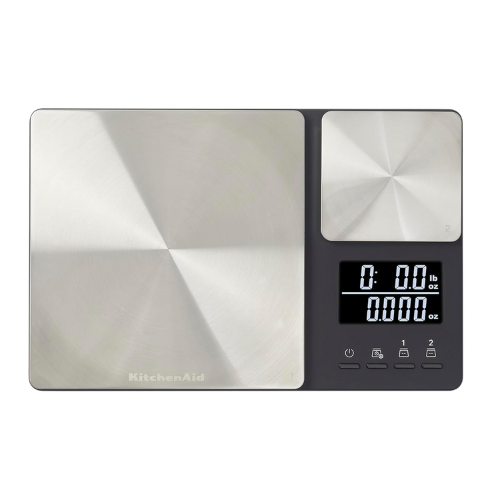
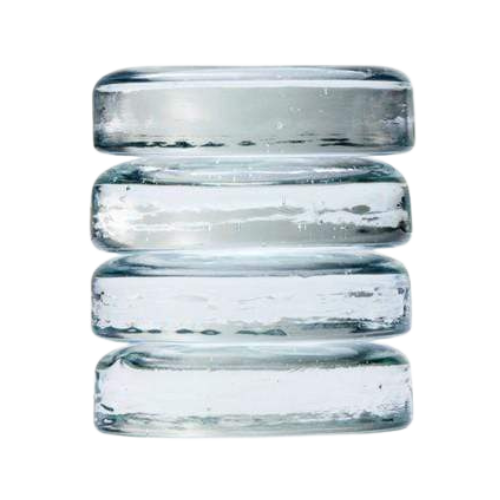
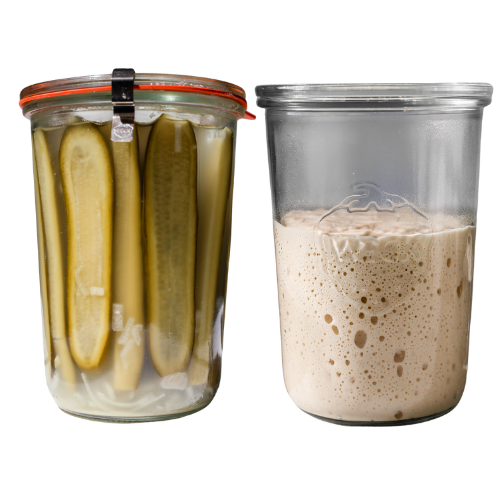
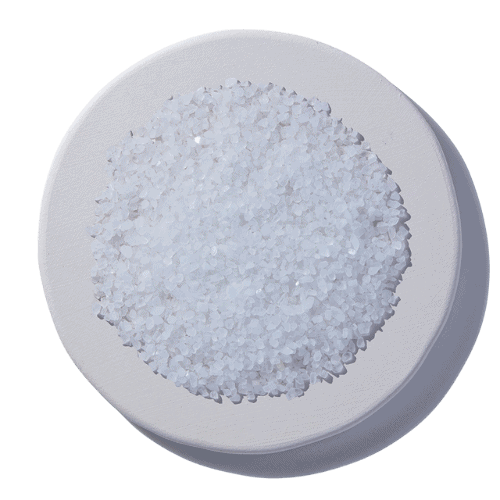
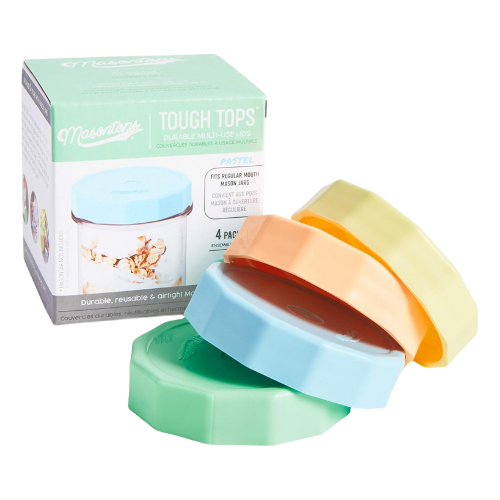
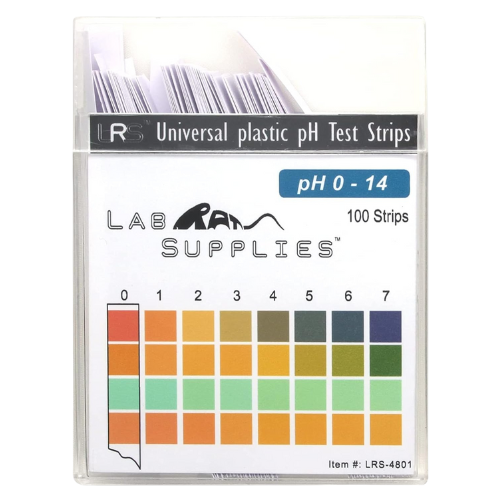
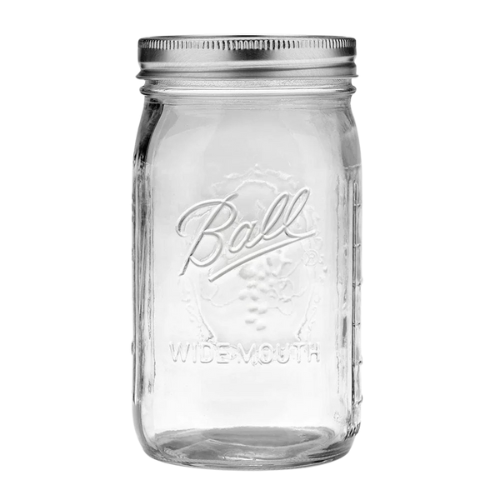


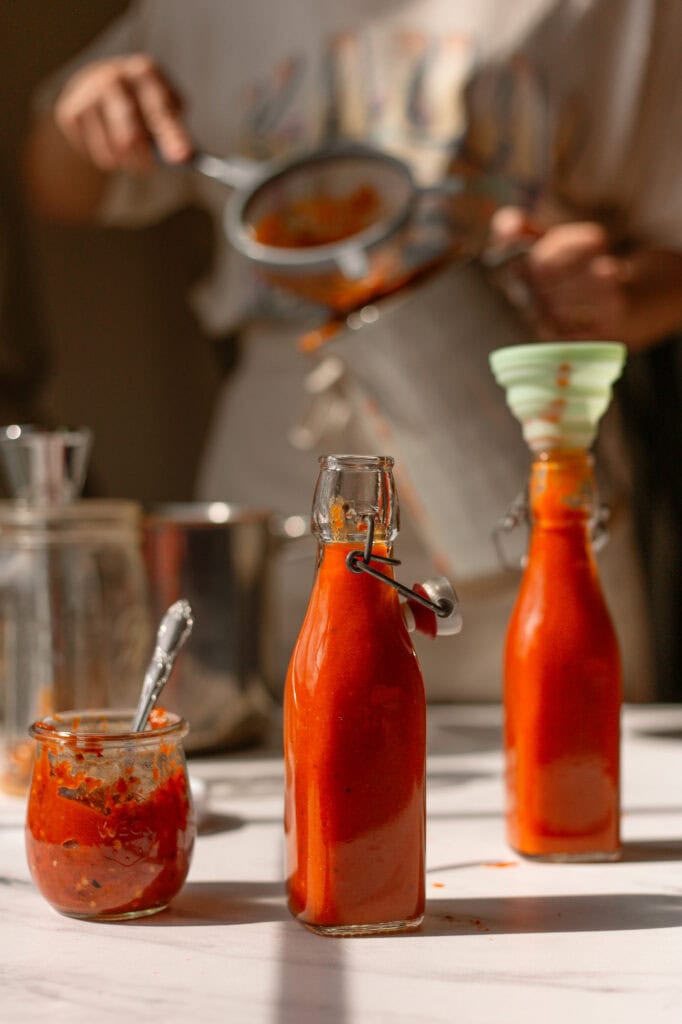


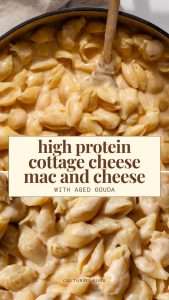


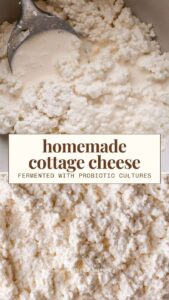
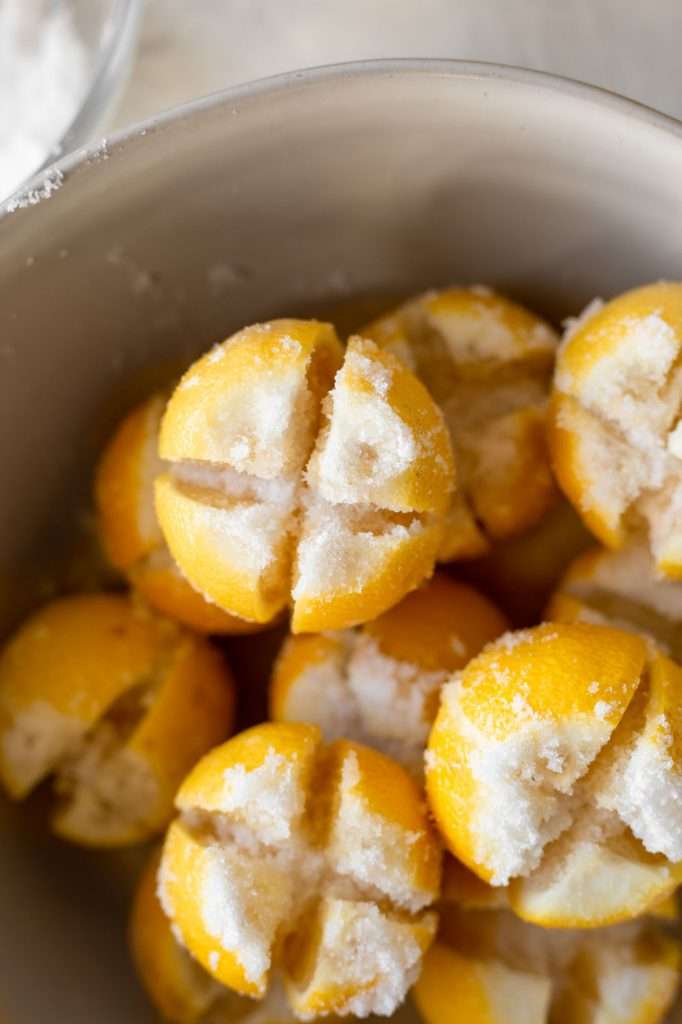
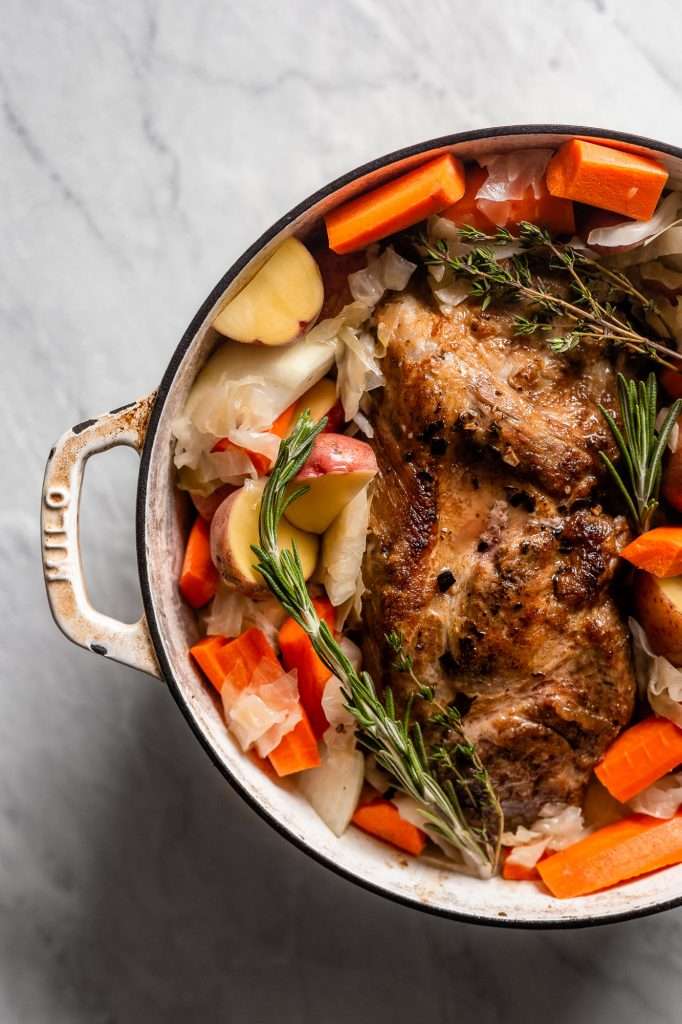
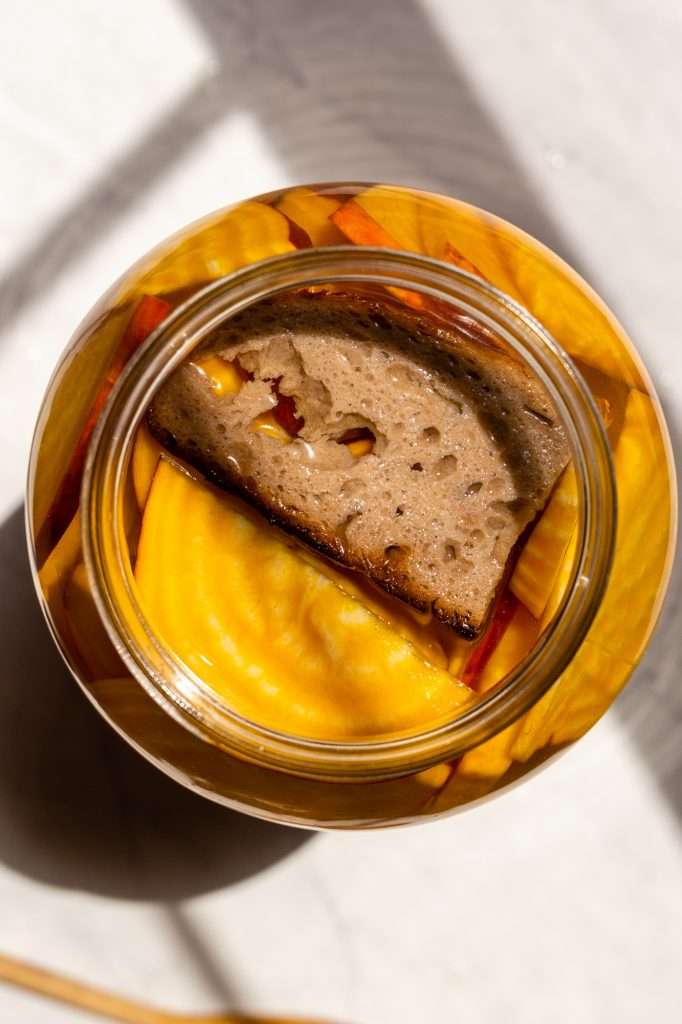


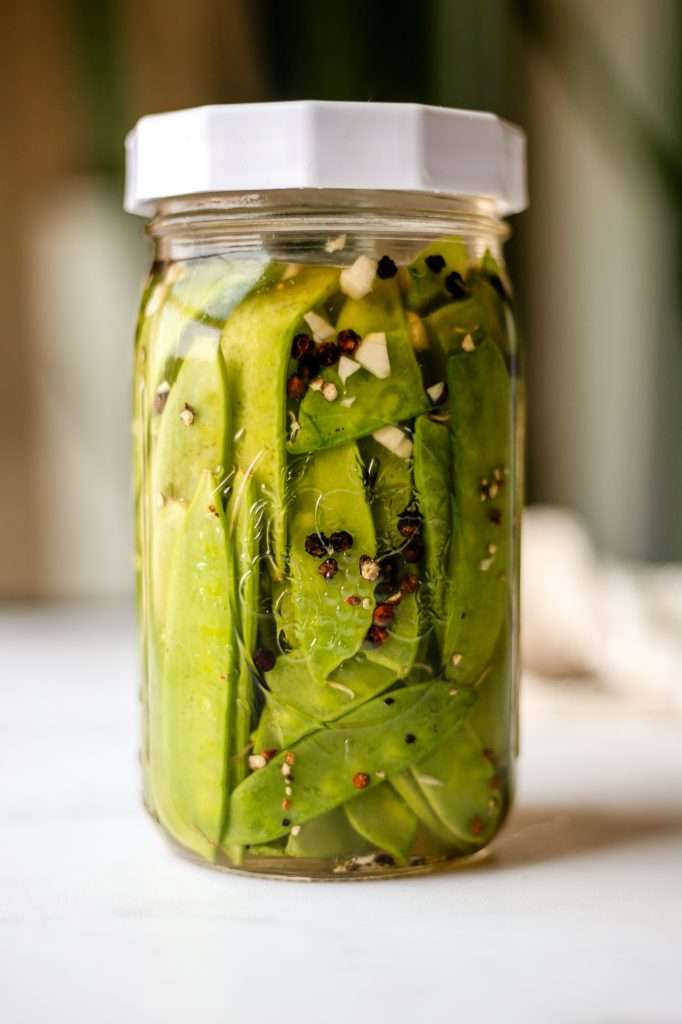


I just started this, and I can already tell it’s going to be amazing
Hi Kaitlynn.
I made this recipe yesterday – there are a few “escapees” that have floated to the top of the liquid. Is this ok?
Thank you, Diane
Hi there! When you have floaties, you can open up the jar, remove the weight then put it back, re-adjusting everything to be under the brine.
Will do! I appreciate the quick reply ~ Diane
Hello, I will certainly try fermented celery & appreciate getting your recipe. Fermented sauerkraut & kimchi are always in my fridge. As a side note, if you have heartburn /acid reflux or GERD, drink a little juice out of a fermented jar of the sauerkraut, etc. jar. it will stop it right away.. it works for me…..
We were away overnight and partner forgot heartburn meds and was really suffering but downed a kombucha and after much gurgling noise and, ahem, a gaseous release, all was right again.
I imagine fermented liquids of just about any sort would do the trick, but since kombucha is meant for drinking it is probably more enjoyable 😉
So happy mine turned out. Eating it everyday… YUMMY. Now on to Coconut Kefir Water.
Thank you for leaving a review! Enjoy the celery and kefir making!
Love this! Thank you.
this was so yummy
Hi. This recipe looks amazing. One question though , the list of ingredients calls for 100 grams of water, but the directions call for 100 grams of water in the jar and then 100 grams of water added to the vegetables in the bowl. Will you clarify please?
It’s the same 100 grams of water… you just weigh it out in the jar first before pouring it into the bowl.
I’m on day 16 of this recipe ferment. A stray piece of shallot escaped my weight barrier and rose above the brine. I noticed a white film on top and when I went to remove the film, I noticed the piece of shallot had fuzzy growth. I removed it and the white film. Everything smells great and brine looks good. Is this a throw away?
If it smells great and the brine looks good, it’s likely fine. Anytime there is fuzzy growth, it’s an eat-at-your-own-risk situation. But I’d, personally, not throw it away.
Hi, could this be done with only the leafy part of celery? I never know what to do with them. Would the fermentation time be shorter since they aren’t as stalky? Thanks!
I think so! I used the leafy part and the stalk, and it was great, so that should work.
Thank you for your instructions. Made it today. Have a great day.
Oh sorry, I forgot to ask you; how much space is allowed between the water and the lid for the brine no to get spoiled by air. Thank you.
The headspace in the jar doesn’t matter. Just make sure everything stays submerged in the brine, and it will be good to go.
Ok, thanks a lot Kaitlynn. Can’t wait to taste it. Have a great day !
Hello hello Kaitlynn.
Well it has been one month now and I tasted your fermented celery recipe this morning. It is excellent !
Thank you very much. I will most certainly repeat the experience.
Have a great day.
Carl
Hi Kaitlynn. Is it ok to use onion instead of shallot?
sure!
I made this last year, at first I was a little surprised at the flavor. Not what I was expecting. But then we could not stop eating it! We put it on everything, our favorite way to enjoy was on Cuban pork sandwiches. Delicious!
I’ve been so excited to try this, thank you for the recipe 🙏🏼
But I just accidentally tipped the wrong jar of salt into my bowl! I have no idea how much salt is in there now. Will it still ferment or shall I just chuck it?
It depends on how much salt you actually added! It may be okay, but only time will tell. You can dump all the liquid, rinse the celery, then re-add the water and salt in the recipe.
This was one of my first ferments and it is tasty! I let it go just over three weeks, and tasted it today. Crispy oniony celery goodness!
Day 25 and it smells and tastes delicious! I can’t stop eating this. I will definitely have to keep a constant rotation going so I always this available.
Hmm…100 grams of water in a 32 oz jar stuffed with celery chunks and leaves left 3/4 of the jar without water….I’m hoping that the salt water pulls out enough water from the celery to cover the celery, but I’m expecting to have to add more water to fill it up and cover the celery. I measured everything by weight, so how did everyone else get everything submerged?
you should not change the recipe or add more water. Celery is 95% water, so the 450 grams of celery should produce more than enough brine to keep it submerged.
Hi, Mizz Fenley.
Just received a bunch of surplus celery from a friend, so I’m going to try this
Question: what is a good starting point for the amount of cracked peppercorns? We like pepper, want to be able to taste it in the finished product, but don’t want it to be too forward.
Thanks for your help.
Joe
Hi there wanting to try this but had a ? Do u absolutely need the weight and the sale or can it be done with out? Thank! Sincerely, Hannah
You absolutely need a fermentation weight and a scale for my vegetable fermentation recipes. If you don’t follow the directions in the recipe, then you probably won’t have good results.
I am on day 6 and don’t see any bubbles yet. Followed the instructions you provided. Do I need to restart?
What kind of jar are you using? and what kind of celery (organic or conventional)? If you are using a weck jar with no gasket, or a mason jar with a loose lid, gas wont build up and you may not see any bubbles.
How long does a fermented food last? I had a batch of purple sauerkraut that I forgot about in the back of my fridge. It was a year and a half old. My mother saw it and said I should throw it out, but it looked and smelled fine.
Depends on the recipe you used to make it! Sauerkraut made using one of my recipes can last about two years in the fridge. Is it looks good, smells good, and tastes good, it’s likely still good. You can test it with a pH strip if you have concerns and use your best judgment!
Thank you!
Hey Kaitlin i’ve successfully used up celery that would’ve otherwise gone bad! Any recipes you recommended using this in?
My favorite recipe with this celery is Honey Butter Blackened Scallops with Couscous Salad. It’ll also go great in Sauerkraut Arugula Salad with Goat Cheese and Berries you can sub the sauerkraut for fermented celery.
Following your simple guide and instructions my first batch turned out perfectly and it is super delicious.
Making my second batch tonight together with kimchi.
me encanta esta receta…gracias
This recipe is great! I subbed shallot or garlic and slice my celery thin on a mandolin. I eat it everyday on top of my cottage cheese. It’s amazing! Getting celery in everyday helps my body fight HER+ cancer cells. 10 years cancer free! Thank you for this delicious and easy recipe!
I was wondering if I could make this with red onion instead of shallots?
Hi ! I am just wondering if the jar needs to be burped at all during the early weeks. Thank you !
yes, need to be burped while it’s bubbling! You can open it up and make sure everything is submerged and that the lid is staying clean too!